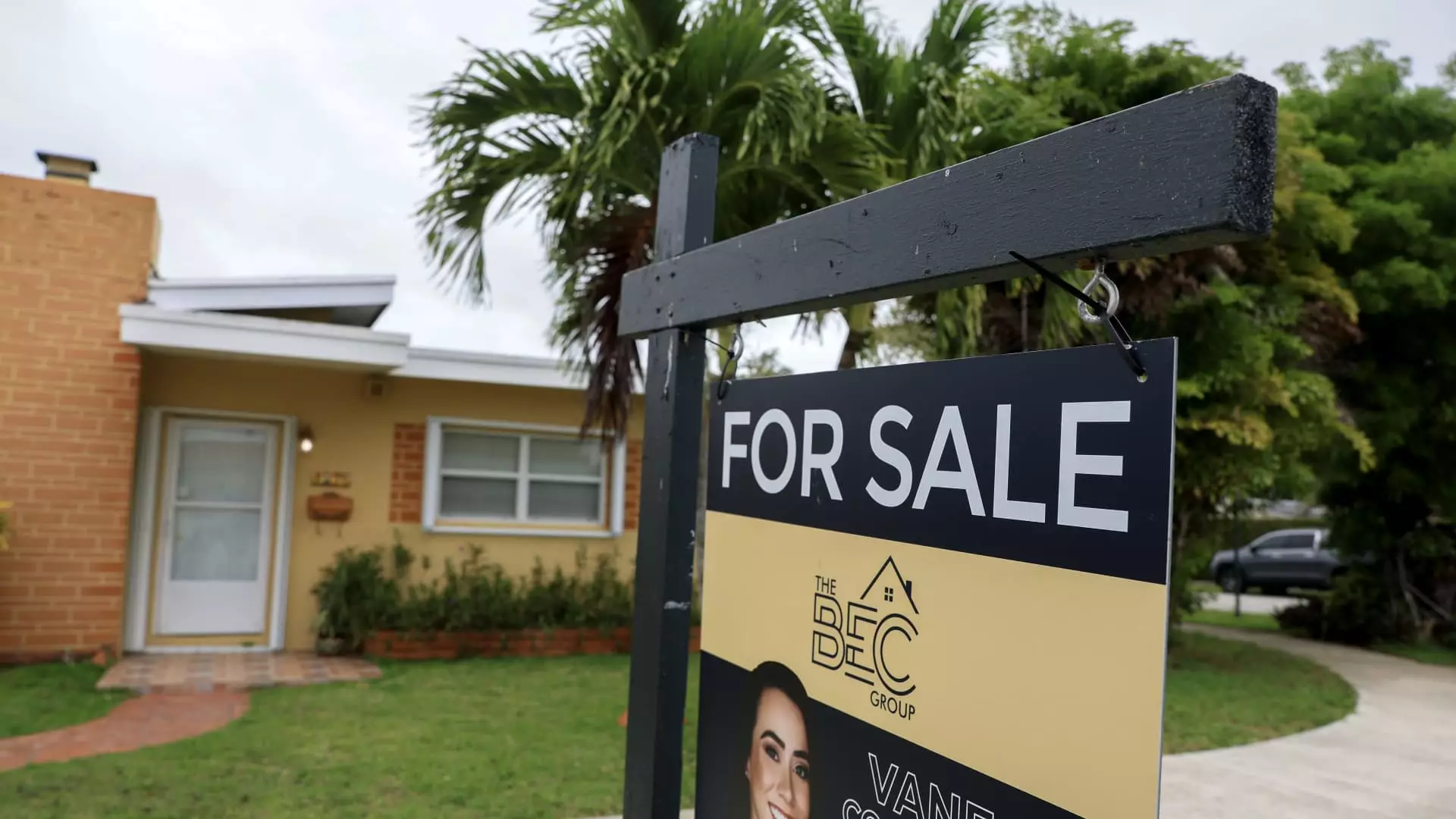Last week’s slight dip in mortgage rates seemed promising on paper, falling from 6.98% to 6.92%. Yet, the anticipated surge in mortgage applications failed to materialize, with a 3.9% drop in total applications compared to the previous week. This paradox raises serious questions about the current state of the housing market and the broader economic factors at play. The Mortgage Bankers Association’s recent report highlights a troubling reality: dwindling demand despite seemingly favorable conditions. It’s as if borrowers are waiting for a magic moment that simply refuses to arrive.
The Disconnect Between Rates and Demand
Homeowners clearly are not responding as one might expect. Applications for refinancing have taken a notable hit, declining 4% from the previous week, even while remaining 42% higher than the same period last year. This uptick from 2022 is deceiving, however, as it stems from a particularly murky financial landscape during that time. With average refinance loan sizes shrinking to their smallest since July 2024, it’s evident that many potential borrowers are more apprehensive than optimistic. In sharp contrast to what we might hope for, this indicates that homeowners are holding back, unsure if waiting will yield better options in the future.
The Homebuyer Dilemma
Moreover, the purchasing side of the equation exhibits its own challenges. Mortgage applications for home purchases also saw a decline, dropping 4%, despite being 18% higher than this time last year. Yet how meaningful is this increase when juxtaposed against the backdrop of lower closed sales figures? Analysts have pointed to an increased supply as a driving factor for purchase demand. Yet, even with the highest inventory levels seen in five years, the reality remains that sales are sluggish. This contradictory scenario hints at a deeper malaise fraught with consumer uncertainty, in which the act of purchasing a home feels treacherous rather than liberating.
The Economic Ebb and Flow
What remains even more perplexing is how the mortgage rates have remained essentially stagnant for two months, confined within an unnervingly narrow range. It’s hard to ignore the sense of foreclosure in the market—the absence of movement conjuring images of a market gripped by hesitancy. Buyers are standing on the sidelines, seemingly confident that a better opportunity is just around the corner. But what if that corner remains out of reach? The current conditions reflect a teetering economy that is troubling for those of us who believe that the housing market should be more responsive to changing rates.
The psychological impacts of these rates can’t be overlooked either. As an advocate for a center-left economic approach, I believe that access to housing is a right, and in times like this, it feels as though the system is failing many would-be homeowners. What we are witnessing is not just a fluctuation in interest rates; it is a reflection of broader economic health and social equity. The promise of home ownership remains tantalizing but frustratingly elusive amidst a backdrop of uncertainty and stagnation.


Leave a Reply